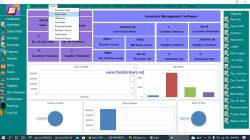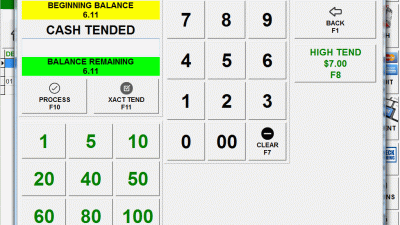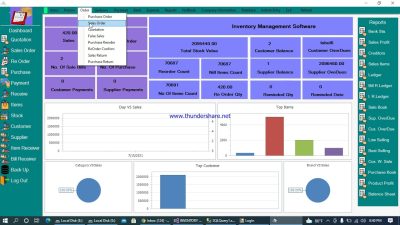
In the ever-evolving world of software development, choosing the right tools is paramount to achievement. The software development landscape is vast and complex, with a plethora of options available, each promising to streamline your workflow, boost your productivity, and ultimately, help you create better software. But with so many choices, how do you navigate this intricate maze and select the tools that are truly the optimal fit for your specific needs ? This thorough guide will walk you through the process of choosing the right software development tools, providing you with a framework for evaluating your options, understanding your needs, and ultimately making an informed decision. We’ll explore the key factors to consider, delve into the varied types of tools available, and offer practical advice on how to make the final decision. Whether you’re a seasoned developer or just starting out, this guide will equip you with the knowledge and insights you need to select the tools that will empower you to build amazing software.
Understanding Your Needs: The Foundation for Choosing the Right Software Development Tool. Before diving into the vast ocean of software development tools, it’s crucial to take a step back and clearly define your specific needs and requirements. This foundational step will serve as your compass, guiding you towards the tools that are most likely to contribute to your achievement. What type of projects will you be working on ? Are you developing web applications, mobile apps, desktop software, or something else entirely ? The nature of your projects will heavily influence the types of tools you need. What programming languages will you be using ? varied tools offer varying levels of support for varied languages. Ensure that the tools you select are compatible with the languages your team is proficient in. What is your team’s size and skill level ? Smaller teams may benefit from simpler, more user-friendly tools, while larger teams may require more robust and attribute-rich solutions. Consider the experience level of your developers when making your decision. What is your budget ? Software development tools scope in price from complimentary and open-source to expensive enterprise-level solutions. Determine your budget beforehand to narrow down your options. What are your collaboration needs ? If your team is distributed or requires extensive collaboration, look for tools that offer attributes like real-time co-editing, version control, and integrated communication channels.
Key Factors to Consider When Evaluating Software Development Tools. Once you have a clear understanding of your needs, you can begin evaluating varied software development tools based on several key factors. These factors will help you compare and contrast varied options and ultimately make an informed decision. Ease of Use: A tool that is difficult to learn and use will only slow down your team and boost frustration. Look for tools with intuitive interfaces, clear documentation, and helpful tutorials. attributes and functionality: Does the tool offer the attributes and functionality you need to accomplish your objectives ? Consider attributes like code completion, debugging tools, testing frameworks, and deployment options. Performance and Stability: A tool that is slow or prone to crashes can be a major productivity killer. Look for tools that are known for their performance and stability. Community and Support: A strong community and readily available support can be invaluable when you encounter problems or need help learning how to use a tool. Look for tools with active forums, thorough documentation, and responsive support teams. Integration: Does the tool integrate well with your existing workflow and other tools you use ? Seamless integration can save you time and effort and improve your overall productivity. Cost: Consider the total cost of ownership, including the initial purchase price, ongoing paid access fees, and the cost of training and support.
Exploring varied Types of Software Development Tools. The world of software development tools is vast and diverse, with a wide scope of options available to suit varied needs and preferences. Here are some of the most common types of tools you’ll encounter: Integrated Development Environments (IDEs): IDEs are thorough software suites that offer developers with all the tools they need to write, test, and debug code in a single environment. Popular IDEs include Visual Studio, Eclipse, and IntelliJ IDEA. Code Editors: Code editors are lightweight text editors that are specifically designed for writing code. They typically offer attributes like syntax highlighting, code completion, and basic debugging tools. Popular code editors include Sublime Text, Atom, and VS Code. Compilers and Interpreters: Compilers and interpreters translate code written in a high-level programming language into machine code that can be executed by a computer. Version Control Systems: Version control systems like Git allow developers to track changes to their code over time, collaborate with others, and revert to previous versions if necessary. Debuggers: Debuggers help developers determine and fix errors in their code. They allow you to step through your code line by line, inspect variables, and set breakpoints. Testing Frameworks: Testing frameworks offer developers with tools for writing and running automated tests to ensure that their code is working correctly.
The Importance of Staying Updated with the Latest Trends. The software development landscape is constantly evolving, with new tools and technologies emerging all the time. It’s crucial to stay updated with the latest trends to ensure that you’re using the optimal tools for the job. Read industry blogs and articles. Attend conferences and workshops. Participate in online communities. Experiment with new tools and technologies. By staying informed and embracing new technologies, you can improve your skills, boost your productivity, and stay ahead of the curve.
Related Post : sofwer de contabilidad
Making the Final Decision: A Step-by-Step Approach. After conducting your study and evaluating your options, it’s time to make a final decision. Here’s a step-by-step approach to help you select the right software development tool: Create a shortlist of potential tools. Based on your study, create a shortlist of the tools that seem like the optimal fit for your needs. Try out the tools on your shortlist. Most software development tools offer complimentary trials or demo versions. Take benefit of these opportunities to try out the tools and see how they work in practice. Get feedback from your team. Involve your team in the decision-making process and get their feedback on the tools you’re considering. Consider the long-term implications. Think about how the tool will scale as your team and projects grow. Make a decision and implement the tool. Once you’ve made a decision, implement the tool and offer your team with the necessary training and support.
Choosing the right software development tool is a critical decision that can significantly impact the achievement of your projects. By carefully evaluating your needs, considering the factors discussed, and exploring the options available, you can find the perfect fit for your team and your objectives. Remember to stay updated with the latest trends and advancements in the software development landscape to ensure you’re always equipped with the optimal tools for the job. Happy coding !












